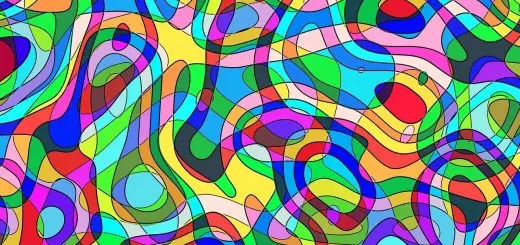How Did the Black Death Alter World History?

Looking for more amazing products? Check out our online store and explore our collection here! Happy shopping!
Before diving in, please note: This post is for informational purposes only. If you’d like to know more about how we approach topics, feel free to check out our friendly Disclaimer Page.
Hey there, amazing readers! 
We’re committed to delivering quality posts, and your support (even just sticking around despite the ads) means everything to us. So, bear with us, and thanks for helping us keep the good vibes rolling. Now, on to the fun stuff!
TRANSLATE BUTTON AT THE END OF THE ARTICLE
A Quick Overview
The Black Death, a catastrophic pandemic that swept through Europe and beyond in the 14th century, is often remembered as one of the darkest chapters in human history.
However, while it brought unparalleled suffering and despair, it also triggered a series of profound changes that would shape the trajectory of world history.
From transforming social structures to altering economic landscapes and inspiring cultural shifts, the repercussions of this pandemic were far-reaching.
So, how did the Black Death alter world history?
Let’s embark on a journey through time and explore the far-reaching effects of this devastating event.
Introduction: The Black Death’s Impact on History
When we think of the Black Death, we often envision the grim statistics: millions of lives lost, entire communities wiped out, and a pervasive sense of dread.
But hold your horses!
While the plague indeed had catastrophic effects, it also acted as a catalyst for change.
Imagine a world where the old ways crumbled under the weight of the crisis, making room for new ideas, social structures, and economic systems.
The Black Death was not just a tragedy; it was a turning point.
The adjustments that society made in its aftermath set the stage for the Renaissance, the Reformation, and even the modern age.
In this article, we’ll explore how the Black Death altered various aspects of life, from social hierarchies to economic practices, and even cultural expressions.
We’ll also delve into the medical advancements that arose from the crisis and discuss how it influenced trade routes.
By the end, you’ll see that the Black Death, for all its horror, laid the groundwork for a new world.
What Was the Black Death? A Brief Overview
The Black Death refers to a series of pandemics that swept through Europe, Asia, and North Africa in the mid-14th century, peaking between 1347 and 1351.
The primary cause was the bacterium Yersinia pestis, transmitted to humans through fleas that infested rats.
The symptoms were gruesome: swollen lymph nodes, fever, chills, and intense pain.
Death often followed within days.
Historians estimate that the Black Death killed about 25 million people in Europe alone—roughly one-third of the population at the time.
The disease didn’t discriminate; it affected all social classes, from peasants to kings.
The sheer scale of mortality had dire consequences for society, leading to a significant disruption of the existing order.
While the term "Black Death" evokes images of death and decay, it also marks a significant turning point, prompting change in areas such as economics, medicine, and cultural expression.
The pandemic was, in a sense, a "reset" button for the world, stirring up turmoil but also creating opportunities for growth and evolution.
The Spread of the Plague: A Global Phenomenon
From its origins in Central Asia, the Black Death made its way westward, facilitated by trade routes and the movement of armies.
Imagine traders transporting not just goods, but also deadly bacteria.
The Silk Road was a particularly notorious conduit for the plague, linking East and West.
Trade Ships: Fleas on rats aboard merchant ships played a significant role in the plague’s rapid expansion.
Military Campaigns: Soldiers returning from campaigns in the East helped spread the disease across Europe.
Urban Centers: Cities with crowded living conditions became hotbeds for the plague’s spread.
Travel and Migration: As people moved in search of safety, they unwittingly carried the plague with them.
Demographic Changes: The pandemic drastically altered population density, leading to abandoned villages and empty towns.
The Black Death didn’t just stay in Europe.
It traveled through the Mediterranean and even reached parts of Africa and Asia.
The result?
A global phenomenon that had implications everywhere it went.
Social Changes: From Feudalism to New Opportunities
The feudal system, which had dominated European society for centuries, faced unprecedented challenges due to the mass mortality caused by the plague.
With a significant portion of the workforce gone, the rigid hierarchical structure began to dissolve.
Labor Shortages: Fewer workers meant that those who survived had the upper hand.
Serfdom Decline: Many serfs gained leverage to negotiate better terms for their labor.
Social Mobility: Opportunities arose for individuals to rise in status, which was nearly impossible before.
Rebellion: Discontent among the lower classes led to revolts, showcasing the fragility of the old social order.
Education and Skill Acquisition: With a need for skilled labor, education became more accessible to the lower classes.
The plague acted like a match to dry kindling, sparking social changes that would eventually unravel the feudal system.
Unquestionably, the events of the Black Death catalyzed a newfound sense of agency among different social classes.
Economic Shifts: Labor Shortages and Wage Increases
The economic repercussions of the Black Death were profound, reshaping the landscape of medieval Europe.
With the labor force drastically reduced, employers found themselves scrambling for workers.
Wage Increases: The demand for labor led to higher wages for workers, who could now negotiate better conditions.
Land Value Decline: Landowners saw the value of their properties plummet as tenants became increasingly scarce.
Agricultural Changes: With fewer people to work the land, some fields were left fallow, while others were turned to more profitable crops.
Rise of New Industries: As traditional agriculture declined, new sectors began to emerge, including textiles and trade.
Market Economy Growth: The shift led to a more market-oriented economy, moving away from the subsistence-based system.
What emerged was a more dynamic economy, paving the way for capitalism and a shift away from the agrarian economy that had dominated for centuries.
The Rise of the Middle Class: A New Social Order
As the plague altered the economic landscape, it catalyzed the rise of a burgeoning middle class.
This middle class was composed of merchants, skilled workers, and tradespeople who found new opportunities in the evolving market economy.
Increased Wealth: Individuals who capitalized on new opportunities accumulated wealth, challenging the traditional nobility’s dominance.
Consumer Culture: The demand for goods and services increased, leading to a proliferation of markets and trade.
Urbanization: People flocked to cities in search of jobs, contributing to urban growth.
Political Influence: The rising middle class began to seek a greater voice in governance, challenging the absolute authority of monarchs.
Cultural Contributions: The middle class funded artistic and intellectual endeavors, contributing to the Renaissance.
The emergence of this new social class served as a key factor in the eventual decline of feudalism and the rise of democratic ideals.
Innovations in Medicine: Lessons Learned from the Plague
The Black Death also led to significant advancements in medical knowledge and practices.
Physicians, faced with the overwhelming nature of the crisis, had to rethink their approaches.
Public Health Measures: Quarantine and isolation became essential strategies to control the spread of disease.
Anatomical Studies: With greater scrutiny of the human body, medical practitioners began to develop a more empirical approach to medicine.
Emergence of Hospitals: The need for organized care spurred the establishment of hospitals.
Pharmacology: The search for cures led to the exploration of new herbs and treatments, laying the groundwork for modern pharmacy.
Medical Texts: Increased documentation of observations contributed to the body of medical literature.
While we might chuckle at some of the misguided practices of the time, the necessity for innovation during the Black Death drove medical advancements that would echo through the centuries.
Art and Culture: The Black Death’s Creative Legacy
The Black Death left an indelible mark on art and culture, inspiring a wave of creative expression.
Artists and writers grappled with themes of mortality, suffering, and the human condition.
The Dance of Death: This art form depicted the inevitability of death, reminding everyone that it comes for us all, rich or poor.
Literature: Works like Boccaccio’s "Decameron" captured the stories of those who lived through the plague, offering a glimpse into the human experience.
Pessimism vs.
Hope: While some art reflected despair, others portrayed hope and resilience, showcasing the human spirit’s ability to endure.
Religious Art: Many artists turned to religious themes, depicting the divine in ways that resonated with the suffering populace.
The Renaissance: The creative upheaval inspired by the Black Death eventually fed into the Renaissance, a period of extraordinary cultural revival.
Art became not just a form of expression but a means of processing collective trauma.
The creativity inspired by suffering is a testament to human resilience.
Religious Transformations: Faith and Doubt Collide
The Black Death had a profound impact on religion, challenging the established Church’s authority and prompting a crisis of faith.
Questioning Authority: Many began to doubt the Church’s explanations for the plague, leading to a decline in its influence.
Rise of Sectarian Movements: New religious movements emerged, advocating for different interpretations of faith.
Increased Piety: Some individuals turned to religion for comfort, engaging in acts of penance and devotion.
Anti-Semitism: The crisis led to scapegoating, with Jewish communities often being unfairly blamed for the plague.
Reformation Seeds: The discontent with the Church would eventually contribute to the Reformation in the 16th century.
The Black Death stirred a religious pot, forcing communities to reconsider their beliefs and the role of the Church in their lives.
Global Trade Routes: Changes Inspired by the Plague
As the Black Death disrupted trade, it also prompted transformations in the routes and methods of commerce.
Shifts in Trade Centers: Major trade hubs like Venice and Genoa were affected, leading to the rise of alternative routes.
New Alliances: Nations began to forge new trade agreements in response to changing circumstances.
Maritime Trade: The emphasis on maritime routes increased, enabling more goods to travel over water rather than land.
Consumer Goods: The demand for various consumer goods surged, influencing production patterns.
Economic Integration: The changes laid the groundwork for a more interconnected global economy.
The Black Death fundamentally altered how and where trade occurred, setting the stage for the age of exploration.
The Black Death in Literature: Reflections and Insights
The literary output following the Black Death serves as a powerful reflection of the human experience during this tumultuous time.
Boccaccio’s Decameron: This collection of stories tells how a group of young people escapes the plague, capturing both humor and tragedy.
Poe’s Influence: Writers like Edgar Allan Poe would later draw on themes of death and despair, showing the Black Death’s lingering impact.
Poetry: Many poets used the plague as a metaphor for deeper existential questions, enriching the literary landscape.
Folk Tales: The folklore that arose during this time often touched on themes of mortality and the afterlife.
Modern Reflections: Contemporary literature continues to explore themes of loss and resilience, harkening back to the lessons learned during the Black Death.
Literature became a vessel through which society could process grief and seek understanding amid chaos.
Conclusion: Lasting Effects of the Black Death Today
The Black Death, while a period of immense suffering, also catalyzed transformative changes across various dimensions of life.
From the collapse of feudalism to the rise of the middle class, the pandemic reshaped social structures, economies, and cultural expressions.
We can see echoes of its impact even today, as the modern world grapples with issues of social justice, economic disparity, and public health.
As we look back, it’s essential to remember that even in the darkest times, human resilience shines through.
The lessons learned from the Black Death remind us of our capacity to adapt and grow, no matter the circumstances we face.
It’s a testament to the enduring spirit of humanity, a story of tragedy woven into the fabric of history, forever altering our path forward.

The Enlightenment Journey is a remarkable collection of writings authored by a distinguished group of experts in the fields of spirituality, new age, and esoteric knowledge.
This anthology features a diverse assembly of well-experienced authors who bring their profound insights and credible perspectives to the forefront.
Each contributor possesses a wealth of knowledge and wisdom, making them authorities in their respective domains.
Together, they offer readers a transformative journey into the realms of spiritual growth, self-discovery, and esoteric enlightenment.
The Enlightenment Journey is a testament to the collective expertise of these luminaries, providing readers with a rich tapestry of ideas and information to illuminate their spiritual path.
Our Diverse Expertise
While our primary focus is on spirituality and esotericism, we are equally passionate about exploring a wide range of other topics and niches 

To ensure we provide the most accurate and valuable insights, we collaborate with trusted experts in their respective domains 
Our blog originally focused on spirituality and metaphysics, but we’ve since expanded to cover a wide range of niches. Don’t worry—we continue to publish a lot of articles on spirituality! Frequently visit our blog to explore our diverse content and stay tuned for more insightful reads.
Hey there, amazing reader! 
Check out our store here and take a peek at some of our featured products below! Thanks for being awesome!










